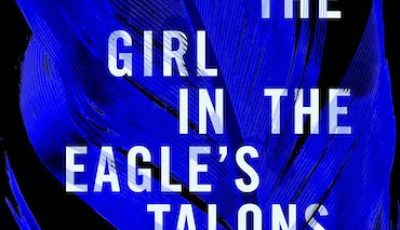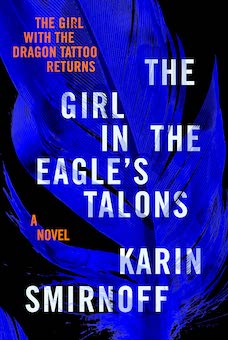

Latest Books The Girl in the Eagle’s Talons with Karin Smirnoff
The Big Thrill Discusses THE GIRL IN THE EAGLE’S TALONS with Karin Smirnoff
Change is coming to Sweden’s far north: its untapped natural resources are sparking a gold rush, with the criminal underworld leading the charge. But it’s not the prospect of riches that brings Lisbeth Salander to the small town of Gasskas. She has been named guardian to her niece Svala, whose mother has disappeared. Two things soon become clear: Svala is a remarkably gifted teenager—and she’s being watched.
Mikael Blomkvist is also heading north. He has seen better days. Millennium magazine is in its final print issue, and relations with his daughter are strained. Worse still, there are troubling rumors surrounding the man she’s about to marry. When the truth behind the whispers explodes into violence, Salander emerges as Blomkvist’s last hope.
A pulse-pounding thriller, THE GIRL IN THE EAGLE’S TALONS sees Salander and Blomkvist navigating a world of conspiracy and betrayal, old enemies and new friends, ice-bound wilderness and the global corporations that threaten to tear it apart.
Karin Smirnoff recently spent some time with The Big Thrill discussing her latest thriller, THE GIRL IN THE EAGLE’S TALONS.
What do you hope readers will take away from this book?
I hope they are happy to meet Salander and Blomkvist again, among new persons as Svala and The Cleaner. I like writing characters with booth dark and bright sides. It’s a contemporary story, set up in the north of Sweden. But the plot could take place anywhere in the world where nature and small peoples life is the prize for power and greed.
How does this book make a contribution to the genre?
I’m basically a novel writer. I focus on relations and characters. I use humor to balance the darker sides. Violence in different forms is the topic throughout all my books.
Was there anything new you discovered, or surprised you, as you wrote this book?
Well, I might not be a traditional crime writer, but I love action and suspense. Along with that I rarely want to solve things, thinking that many questions in life are unsolvable. They can be understood or accepted, but in the crime world plots needs endings. The readers demand a proof of their own theories. So, I must give it to them. But I need tree books for that. I’m sorry if I’ll keep the readers waiting for answers.
No spoilers, but what can you tell us about your book that we won’t find in the jacket copy or the PR material?
Lisbeth falls in love with a police woman. And finds out she’s more immature than her 13 year old niece Svala.
What authors or books have influenced your career as a writer, and why?
In life, reading has been essential. My father disliked reading children’s books for me and my brother. He preferred historic books or adventures. I preferred Astrid Lindgren.
As a teenager in the beginning of the eighties the Danish feminists along with American feminists like Erica Jong and Marilyn French reformed my upbringing. Male American writers has for example been Jerzy Kosinski, Bret Easton Ellis, Stephen King and Cormac McCarthy.
A writer I discovered a few years ago and appreciate is the Hungarian writer Agota Krystof for her accurate language and dim stories.
A crimewriter I’ve enjoyed is Elisabeth Hands books about Cass Neary, for her mix of genre and different characters.
I mostly read Swedish contemporary literature.
What attracts you to this book’s genre?
It’s entertaining and less pretentious than novels. But often less interesting too, regarding language and character.
Without spoilers, are there any genre conventions you wanted to upend or challenge with this book?
I’m not sure, but using a more novelistic way of writing the readers comes closer to the characters.
Which took shape first: plot, character, or setting?
Characters. I initially found The cleaner and the book title when I walked through the forest, hearing sea eagle’s screaming for leftovers of a dead elk.
What was the biggest challenge this book presented? What about the biggest opportunity?
Biggest challenge is to develop old characters. I’m not so keen on Blomkvist. I struggled with him. Biggest opportunity is to spread out the plot over three books. Just like Stieg Larsson did. I don’t plan that much. I enjoy writing when I’m getting surprised by the plot and in what direction the characters are choosing to go.
KARIN SMIRNOFF is a best-selling author in her native Sweden where her books have sold more than 700,000 copies. Her debut novel, My Brother, was nominated for the prestigious August Prize. She was born in Umeå, a small hamlet in northern Sweden, near where she now lives and a short drive from where Stieg Larsson himself grew up.
To learn more about the author and her work, please visit her website.
The Girl in the Eagle’s Talons with Karin Smirnoff
- LAST GIRL MISSING with K.L. Murphy - July 25, 2024
- CHILD OF DUST with Yigal Zur - July 25, 2024
- THE RAVENWOOD CONSPIRACY with Michael Siverling - July 19, 2024

